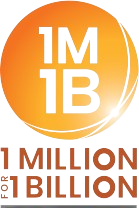The initiative is part of the exchange’s efforts to build a more vibrant and inclusive stock market ecosystem
[SINGAPORE] Investors now have the opportunity to access a broader range of companies listed on the Singapore Exchange (SGX), following the launch of new indices that track the next tier of large and liquid mainboard companies beyond the 30 constituents of the Straits Times Index (STI).
This will help them diversify their exposure across different sectors, spread risk and tap the long-term growth potential of smaller companies.
Launched by SGX Indices on Monday (Sep 22), the new iEdge Singapore Next 50 Indices are available in two variants to cater to different investor needs – one is weighted by market capitalisation (iEdge Singapore Next 50 Index) and the other by liquidity (iEdge Singapore Next 50 Liquidity Weighted Index).
The initiative is part of SGX’s efforts to build a more vibrant and inclusive stock market ecosystem, noted its head of equities Ng Yao Loong.
He said: “By showcasing companies beyond the 30 largest, we are helping investors to better capitalise on the full spectrum of opportunities in Singapore’s stock market. It also serves as a starting point for market participants to explore innovative ways of tracking the performance of different segments of the Singapore market.”
Strong turnover and returns
Constituents of the iEdge Singapore Next 50 Indices include a diverse mix of companies across sectors such as real estate investment trusts, industrials, financials and energy. Notable names include ComfortDelGro, Centurion, Wee Hur, Digital Core Reit and Nanofilm Technologies.
BT in your inbox
Start and end each day with the latest news stories and analyses delivered straight to your inbox.
Nearly 90 per cent or 44 of the indices’ constituents saw turnover improvements in the September 2025 rebalance. This marks a significant increase from just over half of the constituents in December 2024, signalling a broad-based uptick in market activity and investor interest, according to SGX.
Developed using a transparent, rules-based methodology, the indices apply criteria such as free-float adjustment, market capitalisation and liquidity to identify companies that are both sizeable and actively traded. For instance, companies must meet minimum thresholds, including a daily turnover of at least S$100,000 and market capitalisation of S$100 million.
They will be rebalanced quarterly in March, June, September and December.
Complementing existing benchmarks, the iEdge Singapore Next 50 Indices are designed to raise the visibility of mid-cap companies and broaden investor participation in this increasingly active segment of the market.
SGX noted that its constituents have demonstrated healthy liquidity and rising investor participation since the start of the year.
Performance-wise, the iEdge Singapore Next 50 Indices have delivered a total return of 24.1 per cent year-to-date (with dividends reinvested), while the iEdge Singapore Next 50 Liquidity Weighted Index posted a 24.5 per cent gain, according to data provided by SGX. In comparison, the STI recorded an 18.6 per cent return over the same period.
Growing confidence
Industry experts have welcomed the launch of these indices, viewing them as a valuable tool for deepening investor engagement with small and mid-cap companies.
Luke Lim, managing director at Phillip Securities and Securities Association of Singapore (SAS) chairman, described the new benchmarks as a bridge for investors. It helps them “move from the familiarity of established benchmarks to growing confidence in Singapore’s mid-cap companies”, he told The Business Times.
Echoing this sentiment, David Gerald, the president of Securities Investors Association (Singapore), or Sias, noted that this move sets a precedent for other index providers to follow and encourages the development of new indices that spotlight different tiers of the market.
“The move also encourages companies to do more to unlock shareholder value as their viability would be recognised,” he said.
In addition to expanding investor choice, the new indices are expected to act as catalysts for index-linked products such as funds, exchange-traded funds (ETFs) and futures.
These instruments can drive both primary and secondary market activity, enhance liquidity and spark investor interest in previously underexplored segments, noted Malcolm Koo, CEO of CGS International Securities Singapore.
“By spotlighting the next tier of liquid and sizeable companies, SGX creates a pathway for firms to graduate into the STI over time,” he said.
This increased visibility, added Koo, can strengthen analyst coverage, attract institutional capital and boost retail investor confidence. A robust mid-cap benchmark can also catalyse funding, support initial public offering momentum and generate spillover interest into smaller Catalist-listed companies.
“These initiatives, combined with other reforms, point in a positive direction towards a more vibrant and resilient capital market in Singapore,” said Koo, adding that they align with the Monetary Authority of Singapore’s objectives under the Equity Market Development Programme.
Singapore is not alone in this approach. Many global exchanges have established similar tiered or small and mid-cap benchmarks. The FTSE 250 in the UK and the Russell 2000 in the US, for example, are widely used as ETF and fund benchmarks and have successfully channelled capital into smaller and mid-sized companies.
According to Koo, Singapore stands to benefit from the same dynamic through the newly launched iEdge Singapore Next 50 Indices.
Investor activity appears to support this trend. In the first eight months of 2025, institutional investors net purchased S$425 million worth of small and mid-cap stocks. Over the same period, average daily turnover surged by 50 per cent to S$163 million, driven largely by increased retail investor participation.
Building on this positive momentum, SGX expects further development of indices that highlight other segments of the local stock market.






